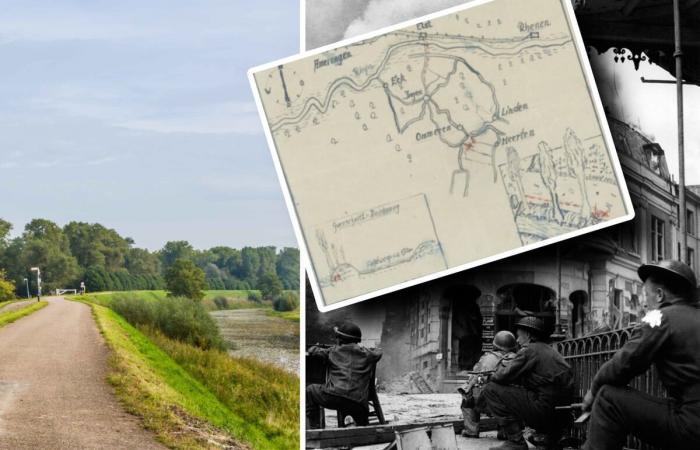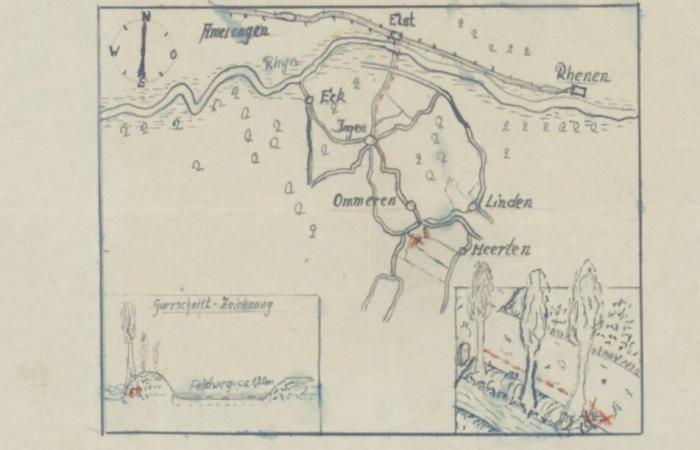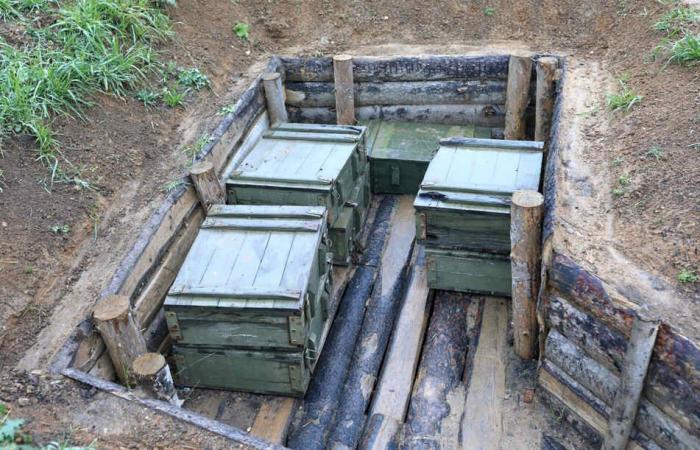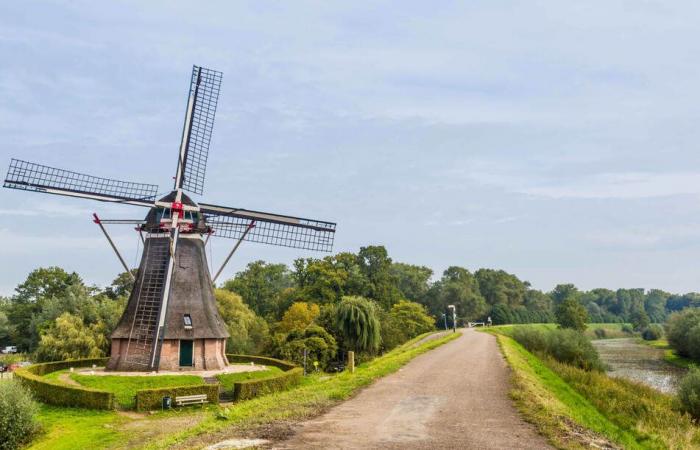The Hague – A huge treasure trove of gold is said to have been lying dormant in a tranquil village in the Netherlands since the end of the Second World War. Now a treasure map makes soldiers of fortune and treasure hunters sit up and take notice. What’s up with the Nazi treasure?
From April 1945 until shortly before the end of the war, the streets of Arnhem in the Netherlands were heavily contested. There, German soldiers are said to have stolen chests full of gold and jewels from a bank and buried them in a nearby village. The treasure has not been found to this day. © Montage: PIGISTE / BRITISH OFFICIAL PHOTO / AFP, AFP / PLANET NEWS
Somewhere near Ommeren, a village in the Dutch province of Gelderland, a tremendous treasure is said to be hidden. A hand-drawn treasure map published a few days ago by the National Archives of the Netherlands shows exactly where. There is little doubt about the authenticity of the card, as “El Pais” reports. But the story behind it is more than adventurous.
In August 1944 – the Netherlands was still occupied by the Wehrmacht – the Allies bombed a branch of the Rotterdamsche Bank in Arnhem, almost 30 kilometers from Ommeren. The bombs destroyed the building and damaged several safes – jewels, gold and other valuables were just waiting to be collected.
Some German paratroopers who were stationed there sensed their great opportunity. The soldiers gathered up the treasures, stowed them in ammunition boxes and took them away.
oddity
Between 8 and 71 years old: Almost 200 brave people at the New Year’s swim in the Heidebad Halle!
However, this did not go unnoticed: local residents observed the goings-on and contacted the authorities after the final defeat of the Germans.
Since the end of the Second World War, the treasures have disappeared from the Arnhem Bank
This is the “Treasure Map of Ommeren”. It was found on a German soldier shortly after the end of the war. © Dutch National Archives
The “Nazi Treasure of Ommeren” is said to have been buried in ammunition boxes very similar to these. (symbol image) © 123rf/Radist

The stolen gold is said to still lie somewhere near Ommeren in the province of Gelderland. (symbol image) © 123rf/photoweges
After the end of the war, the Dutch wanted their assets back and began looking for the fortune hunters of the past. A few months later, a soldier was tracked down in Baden-Baden who was present when the parachutists plundered the Arnhem Bank. At the time, Helmut was almost 20 years old and could still remember the robbery very well.
He said he saw the boxes being buried. Also in his possession was the extremely accurate treasure map.
However, despite three thorough searches of the area, the treasure chests could not be found. The gold and jewels of Arnhem are still gone.

oddity
Woman gets back purse after 40 years: The site is strange!
Possibly the map sprang from Helmut’s imagination – Possibly someone else was faster and found the treasure long ago.
Or else: The chests are still on the field near Ommeren, waiting to be found.
A historian doubts that hobby treasure hunters are meanwhile setting out with metal detectors to find the “Nazi treasure of Ommeren”.
The renowned historian Joost Rosendaal from the Radboud University Nijmegen doubts that history can have happened in this way.
The expert points to two discrepancies. Firstly, there is no evidence that the bank was actually bombed by the Allies and secondly, the parachute regiment in question was still stationed on the Eastern Front in August 1944. Still, historian Rosendaal thinks the story is intriguing and says the background should be investigated further.
Meanwhile, some Dutch have announced on their own after Nazi gold to want to search. Numerous amateur treasure hunters are now roaming the Ommeren area with metal detectors.







